Category: NYC History
To the Left Coast
When KD first called to tell me he was going to be leaving our city for a great new opportunity in San Francisco, I could hardly believe the news. It was difficult for me to imagine the born and bred Brooklyn boy abandoning New York for a place of chilly summers, blankets of fog and intermittent earthquakes. Not to mention restaurants that close at 10 and blueberry bagels? Oy gevalt!
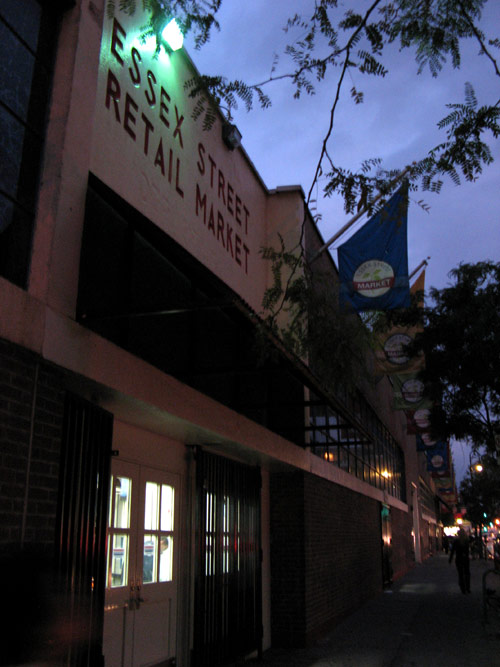
None such atrocities to be found here on the Lower East Side, where KD was hosting his send-off soiree at Essex. During its heyday at the turn of the 19th century, this neighborhood was the heart of New York’s Jewish community, the great majority of whom were from Russia and Eastern Europe. In 1940, Mayor Fiorello H. LaGuardia created the 15,000 square foot Essex Street Market in an effort to clear the already congested LES streets of the pushcarts he found so unsightly.
It was part of LaGuardia’s larger effort to reduce the city’s street traffic overall, and during this time several indoor retail markets were erected throughout New York City, including La Marqueta in East Harlem and the Arthur Avenue market in the Bronx.
Over the years, the vendors expanded their businesses to form permanent neighborhood fixtures where locals flocked to find food and services with a personal touch, and at affordable prices. Demographics shifted in the 1960s and 70s, as did the shopping culture, as consumers began shopping at grocery stores and supermarkets for their produce. By the time the city’s Economic Development Corporation took over ownership of Essex Street Market in 1995, conditions in the market had deteriorated to the point that it was all but abandoned.
But in the past five years, though, as the neighborhood underwent another resurgence, so too did the Essex Street Market. In 2001, the market was only 60 percent occupied; these days, over two dozen food vendors now occupy every square foot of available space. The EDC receives applications for new tenants on a weekly basis, owing in large part to the influx of more prosperous neighbors and the low vendor rents; at $27 a square foot on average, these food retailers pay less than a third of the standard price in Manhattan and parts of Brooklyn.
The restaurant had arranged for platters of lox and sushi, cuban sandwiches and empanadas – a veritable smorgasbord of tasty ethnic bites to send KD on his way to California.
Many nights I’ve sat with KD at this very bar: after our infamous holiday party, years before the engagements, his marriage, the birth of his twin girls. We’ve come a long way since then. Fare thee well, my friend.
Later that night, I glanced up at the Bryant Park transfer point, right into the glittering windows of the New York Public Library.
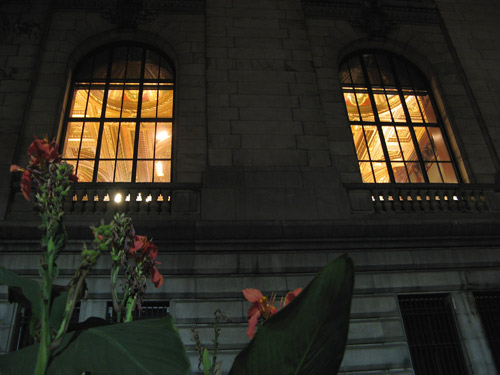
A glimpse of Greece
At Athens Square in Astoria, Queens:
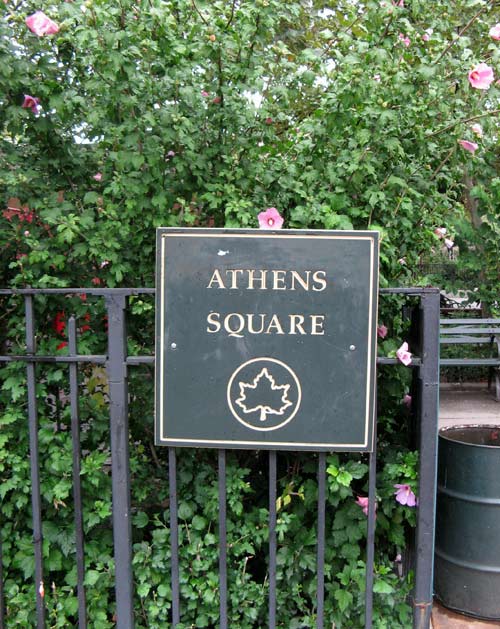
In 1839, Stephen Halsey renamed the area then known as Hallet’s Cove for fellow fur-trader John Jacob Astor, the first millionaire in the United States, in an effort to persuade him to become the village’s patron. (Astor, however, invested just $500 in the community – in the form of an endowment to the Astoria Female Seminary.)
Astoria has long been known for its Greek population — the largest in New York City, and it’s been said, the largest outside of Greece. The .9 acre Athens Square on 30th Avenue between 29th and 30th Streets opened in 1971, during the height of Greek immigration, and underwent an extensive $1 million renovation in 1993.
The mayor of Athens presented Astoria with this replica of the Piraeus Athena (c. 350 B.C.), the goddess of wisdom and protectress of Athens, as a gift on March 28, 1998.
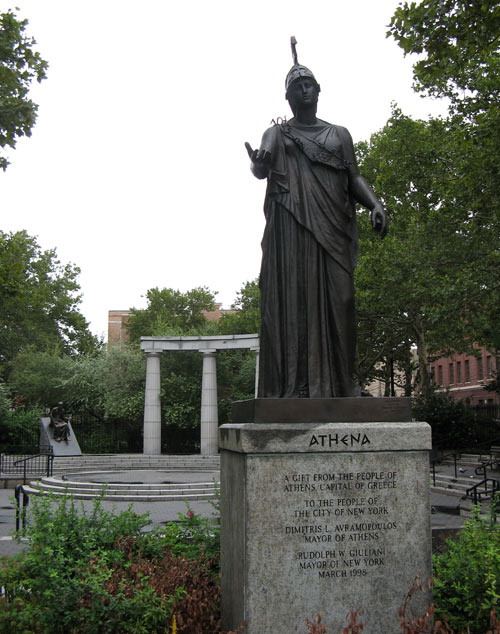
The three Doric granite columns in the sunken amphitheater were erected in a composition echoing that of the Tholos temple of Athena Pronaia in Delphi, 100 miles northwest of Athens.
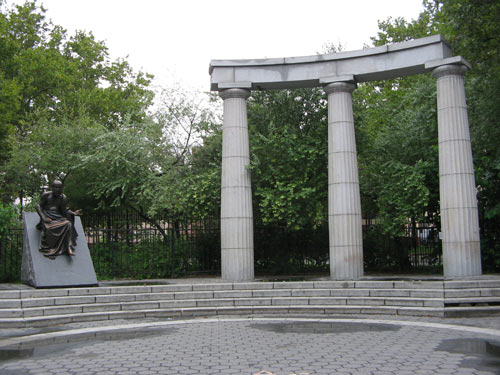
Socrates sculpture, “gesturing as if engaged in dialogue” — the origin of “explaining hands,” perhaps?:
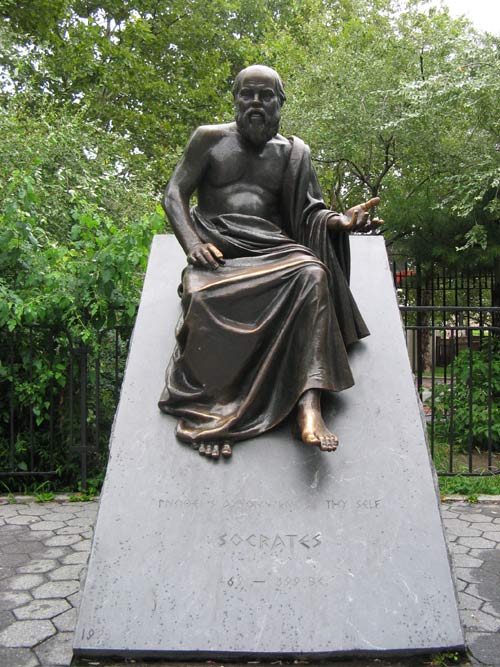
The Greek-looking font on the pedestals – similar to the one on the Anthora coffee cups – is probably about as Greek as the “Wonton” font is Chinese.
Rewind: Catching up on a couple of July eats…
Eisenberg’s Sandwich Shop
A couple of weeks ago, S and J keyed me in to Eisenberg’s Sandwich Shop, a low-key gem of a diner, located just steps from Madison Square Park. It seemed like just the spot for our Thursday midday excursion.
This vintage luncheonettes has been a Flatiron fixture since 1929, but this afternoon was my first visit. After three-quarters of a century, Gourmet columnist Michael Stern still swears by the egg-salad sandwich as does the Voice’s Robert Sietsema. Eric Asimov of the Times touts the “elementally perfect tuna sandwich.”
In 2006, the vintage sandwich shop was saved from being turned into a soulless Starbucks/Duane Reade/Chase by Josh Konecky — a longtime Eisenberg’s regular turned owner, and “curator of a lunch experience.”
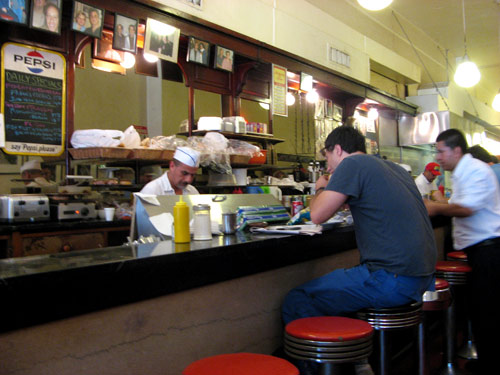
We arrived at the peak of lunch hour and were seated near the famed counter, where we could watch the men at work. The menu was typical deli counter fare: the famed aforementioned tuna and egg salads, ruebens, matzoh ball soup, chopped liver, a few platters here and there. We went for a couple of old New York favorites (the pastrami and a burger), passing on the “Real New York egg creams” (advertised on a time-worn sign) for a pair of lime rickeys. Our order was taken by a waitress — who true to form, actually did address me as “sweetie” — and within minutes, the platters arrived:
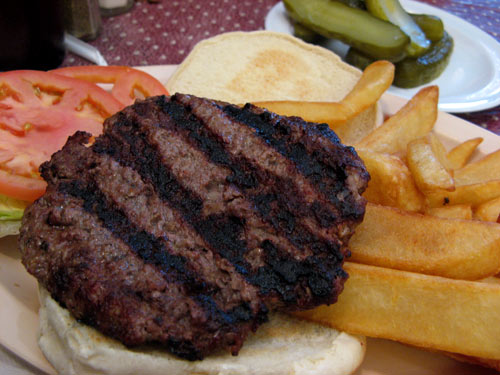
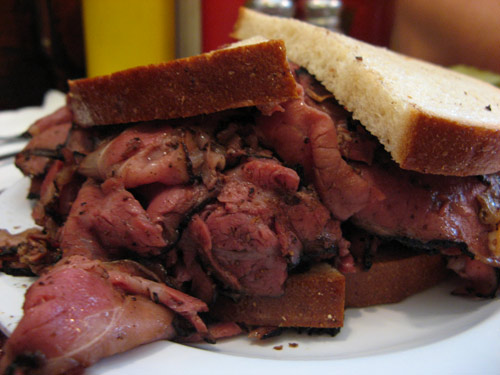
My burger was very good, if a bit overdone – and unlike at a certain shack across the street, we were able to dig in within 15 minutes of arriving. When the accompanying fries arrive this hot and crisp, I’m a happy girl. SYB’s hot pastrami was piled high on rye; the meat itself was meltingly tender and salty, as good pastrami should be. The lime rickey – my first – went against expectation. Like a very sweet gin rickey without the gin, or a mojito without the rum and mint… and also… pink? (S later explained that the color was due to the addition of grenadine.)
Love it or hate it, Eisenberg’s is a New York City institution.
| S | M | T | W | T | F | S |
|---|---|---|---|---|---|---|
| 1 | 2 | 3 | 4 | 5 | 6 | 7 |
| 8 | 9 | 10 | 11 | 12 | 13 | 14 |
| 15 | 16 | 17 | 18 | 19 | 20 | 21 |
| 22 | 23 | 24 | 25 | 26 | 27 | 28 |
| 29 | 30 | 31 | ||||
Search
Popular Tags
Categories
Archive
- July 2010
- July 2009
- January 2009
- November 2008
- September 2008
- August 2008
- July 2008
- June 2008
- May 2008
- April 2008
- March 2008
- February 2008
- January 2008
- December 2007
- November 2007
- October 2007
- September 2007
- August 2007
- July 2007
- June 2007
- May 2007
- April 2007
- March 2007
- February 2007
- January 2007
- December 2006
- November 2006
- October 2006
- September 2006
- August 2006
- July 2006
- June 2006